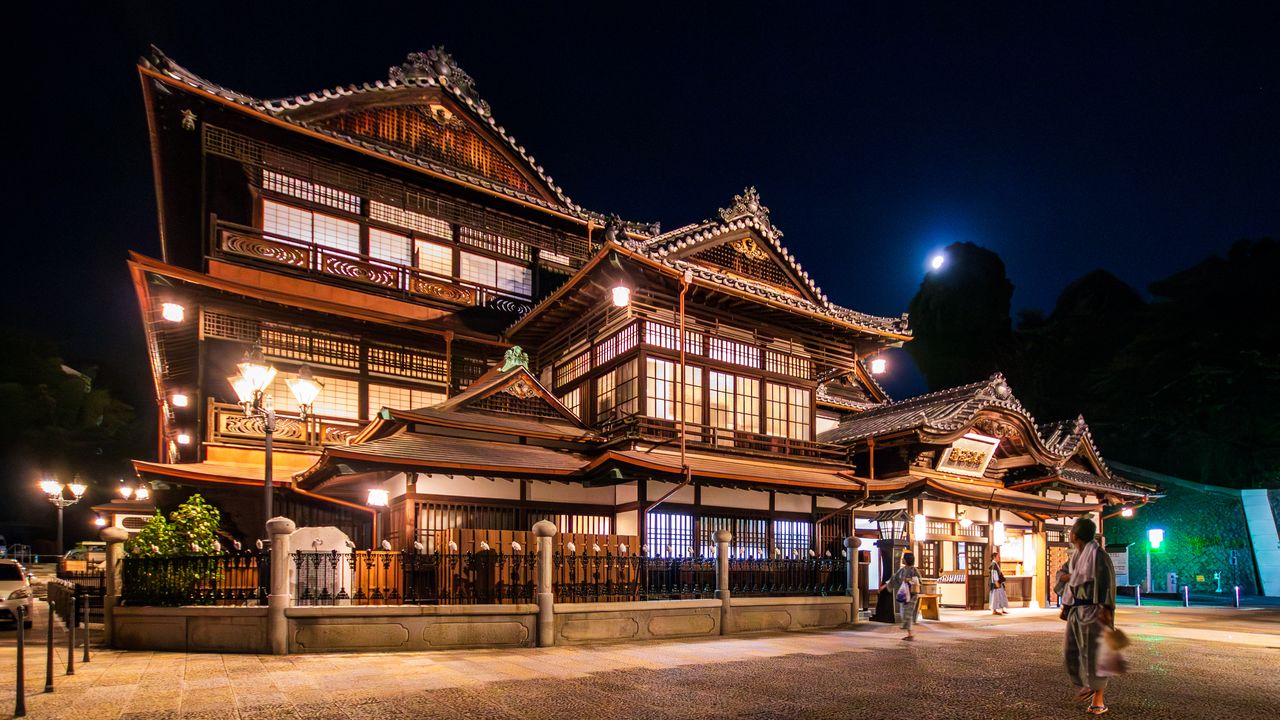
The Dōgo Onsen Honkan: Hot Spring Waters and Literary Connections
Guideto Japan
Architecture Culture History- English
- 日本語
- 简体字
- 繁體字
- Français
- Español
- العربية
- Русский
Eminent Visitors
Dōgo Onsen is Ehime Prefecture’s prime tourism draw. The onsen hot spring district, two kilometers from prefectural capital Matsuyama’s center, is filled with old-fashioned ryokan inns and restaurants serving local cuisine.
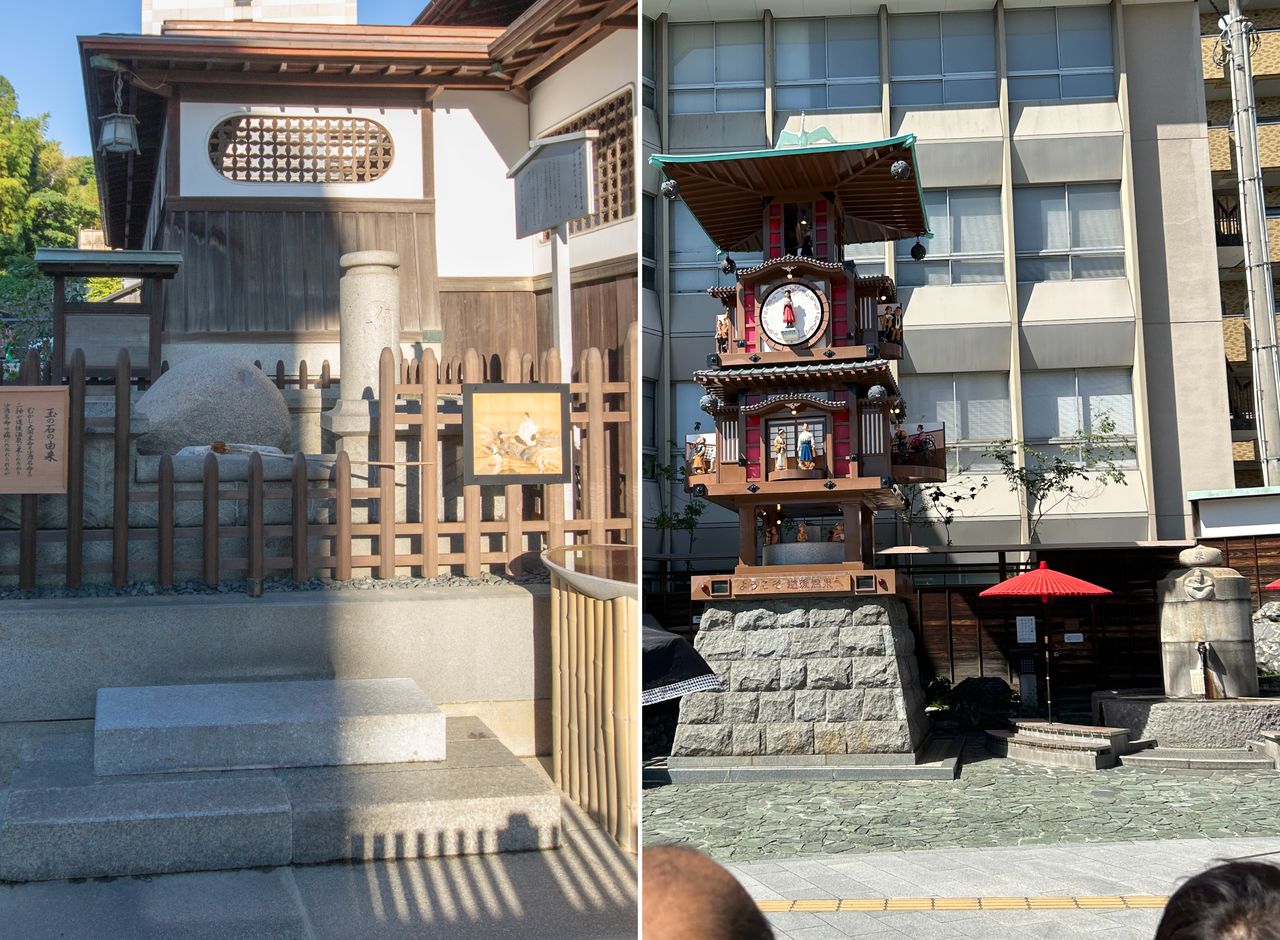
Left: The spring where the deity Sukunahikona is said to have come to restore his health. Right: The Botchan mechanical clock and a footbath in the square fronting Dōgo Onsen station. (© Nippon.com)
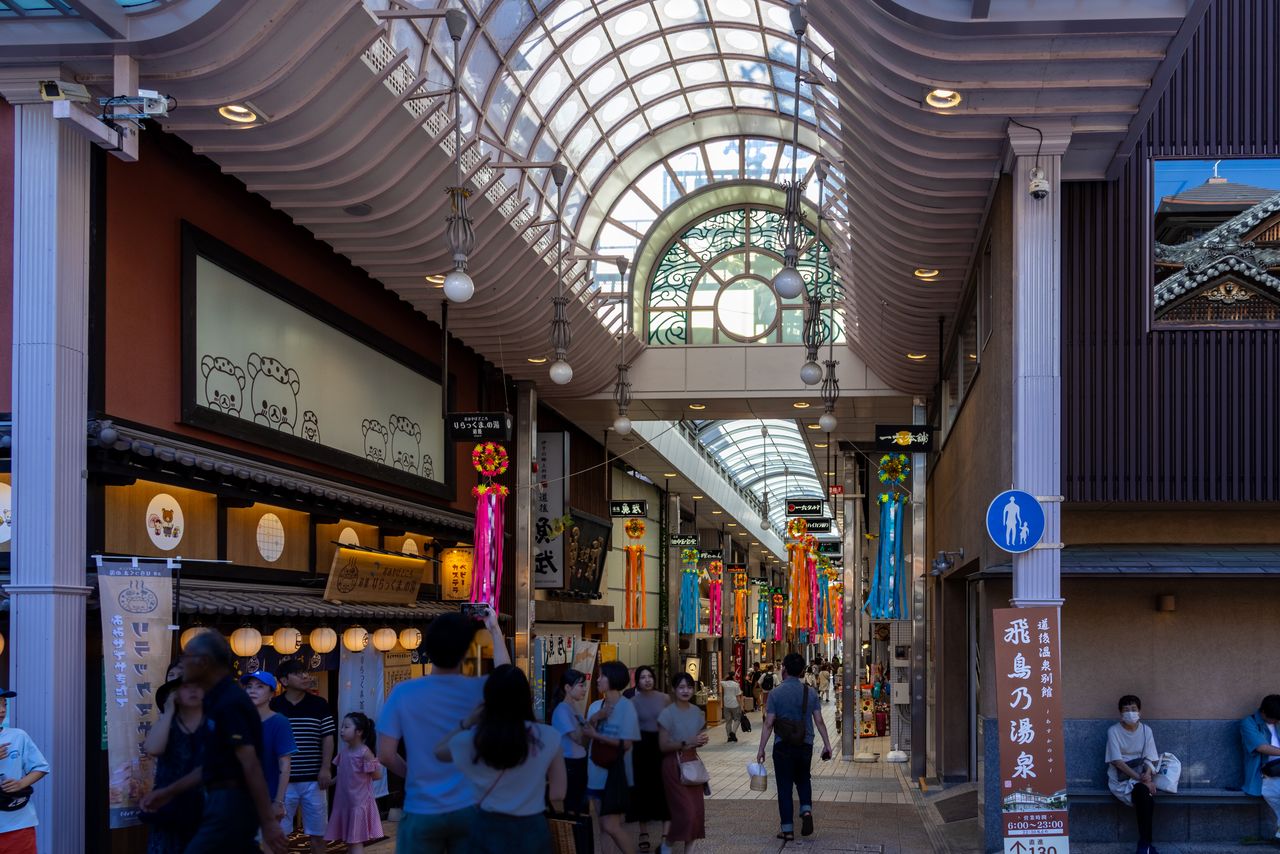
Dōgo Haikara-dōri, the shopping arcade linking Dōgo Onsen Station with the Dōgo Onsen Honkan. (© Nippon.com)
Legend has it that Dōgo, reputed to be the country’s oldest hot spring, was discovered when an injured egret bathed in its waters and was healed. Over the centuries, Dōgo was associated with visits by many eminent figures, from the deities Ōkuninushi and Sukunahikona in the age of myths to statesman Prince Shōtoku (574–622) and Empress Saimei (594–661). Dōgo’s fame was such that it was even mentioned in classical literature such as the Man’yōshū poetry collection, the Nihon shoki chronicle, and The Tale of Genji.
Nevertheless, many people today associate Dōgo Onsen with Natsume Sōseki’s Botchan. This tale, set in Matsuyama based on Sōseki’s experiences while teaching at a middle school there in 1895, mentions the Dōgo Onsen Honkan public bath, which had been refurbished just the year before. The story’s protagonist, a newly minted teacher identified only as ore (me), relates humorous episodes such as being reprimanded for swimming in the bath or teased by his students. Matsuyama fixtures such as the Botchan train and Botchan dango sweets are named after the famous book.
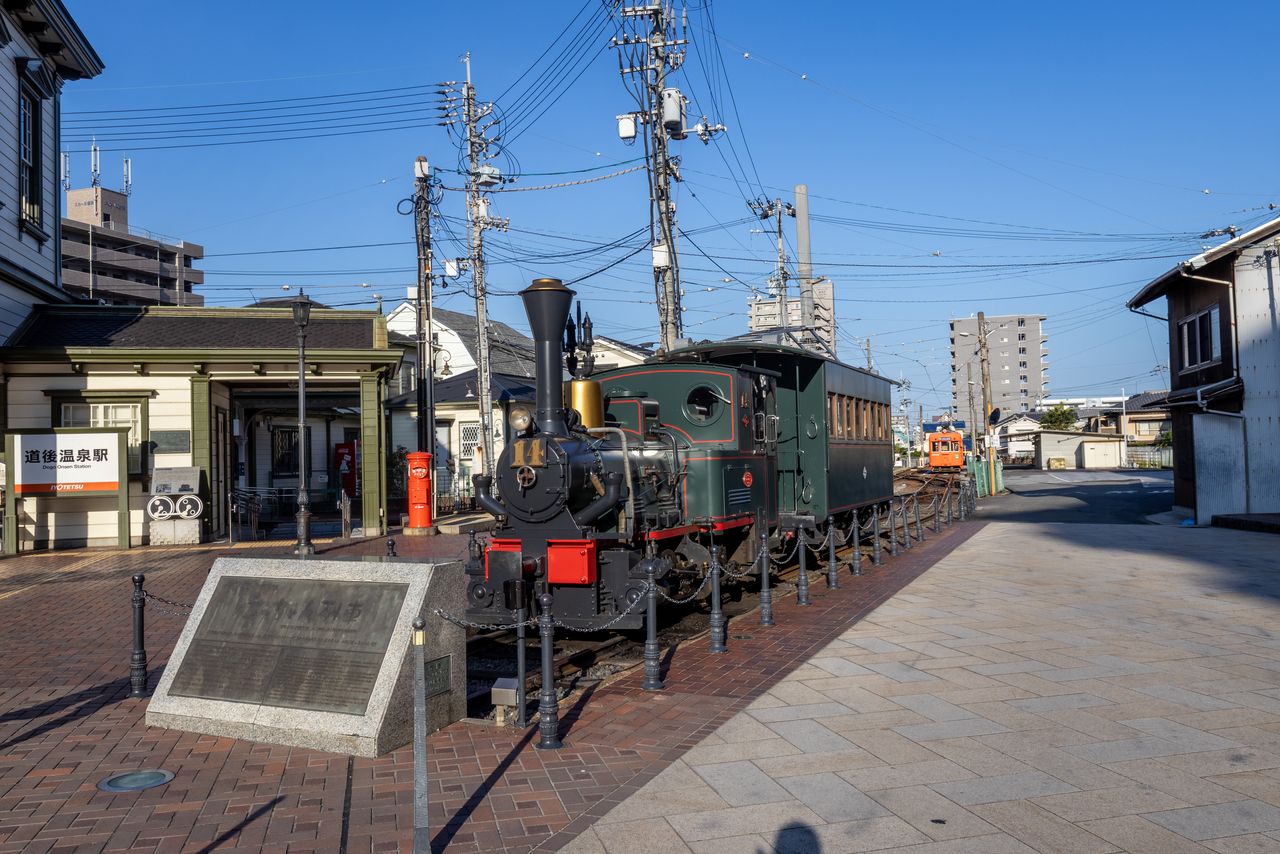
The Iyotetsu Railways Botchan train. Originally a steam locomotive operating on a route serving city residents, it was fitted with a diesel engine when it was restored. (© Nippon.com)
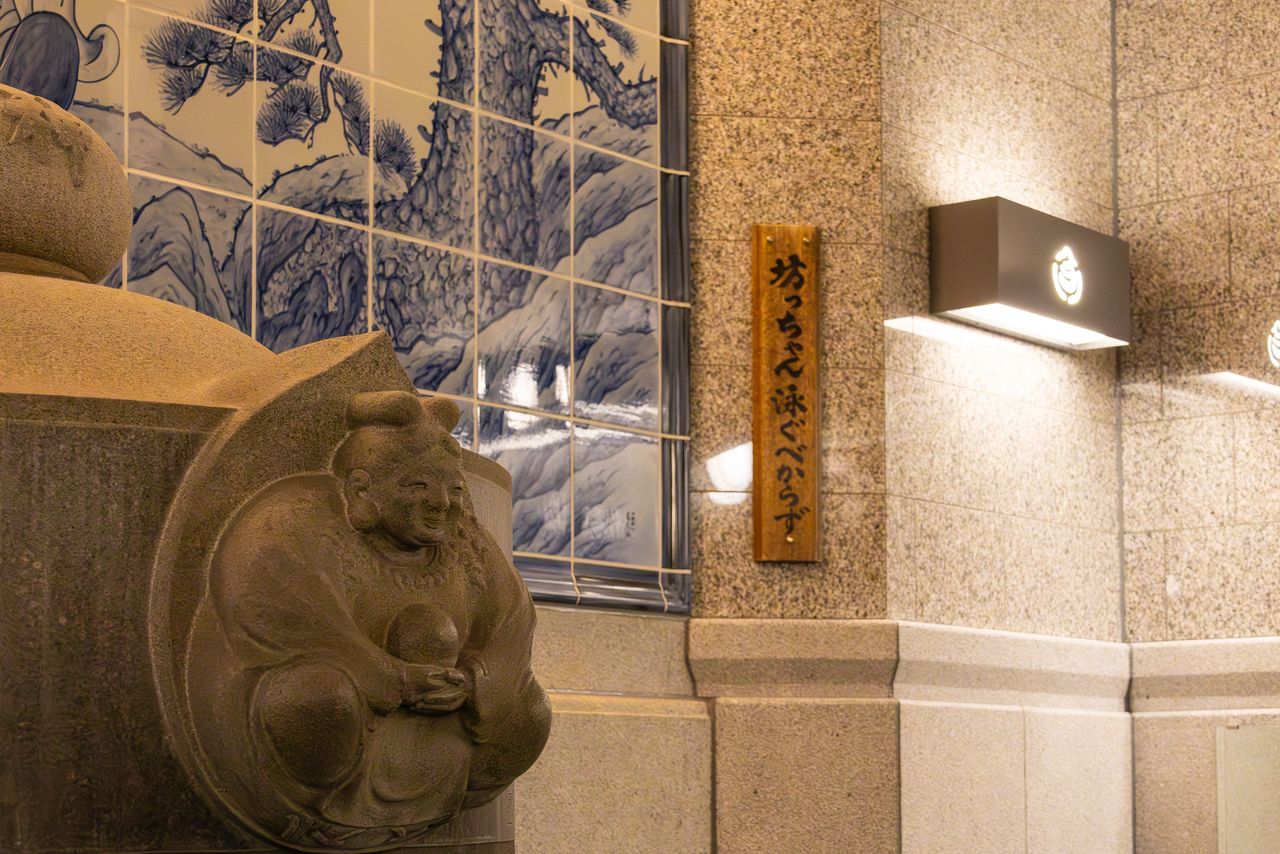
The “Botchan, no swimming” sign in the Kami no Yu bath in the Honkan building references a famous episode in the book. (© Nippon.com)
Together with his friend Masaoka Shiki, a poet and Matsuyama native, Sōseki frequented Dōgo, as they hoped to strengthen their sickly constitutions. After bathing, they would rest in a room later named the Botchan Room, where a bust and photos of Sōseki are displayed.
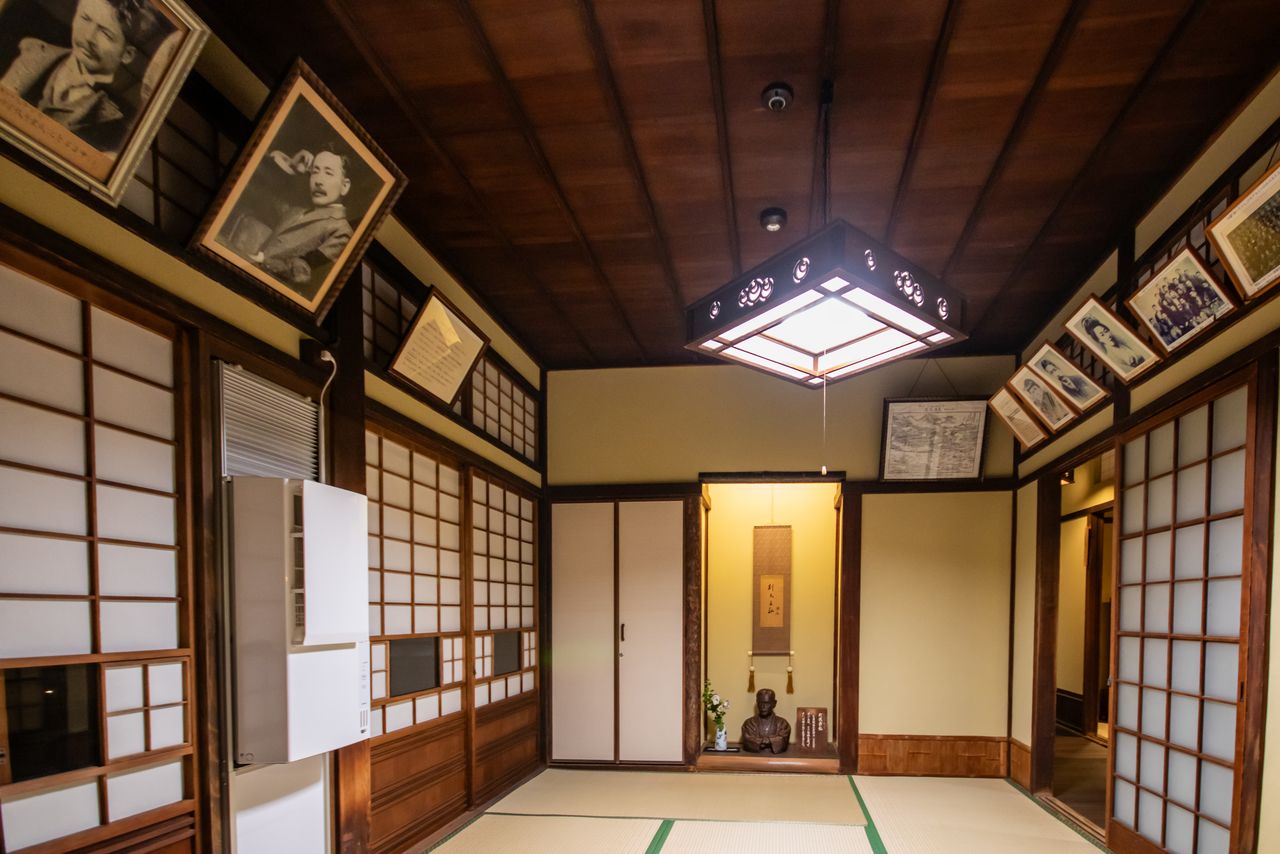
In the Botchan Room, photos of love interest Madonna and other characters in the book are also on display. (© Nippon.com)
The Honkan consists of four interconnected buildings erected from 1894 to 1935; the exterior looks like a castle or a temple. The buildings, a rendering of a modern-period onsen, were designated an important cultural asset in 1994, the first public bath in the country to be so recognized.
To preserve the Honkan for future generations, the city of Matsuyama, which operates the facility, began seismic retrofitting and other refurbishment work in January 2019, closing the relaxation areas, with only the bath open for business. The building, the heart of the Dōgo Onsen district, stood sheathed in tarpaulins, and the COVID-19 pandemic period of restrictions left the neighborhood deserted. When the Honkan finally reopened on July 11, 2024, diehard onsen fans queued the night before to be the first in line to bathe. Today, the district has regained its lively atmosphere.
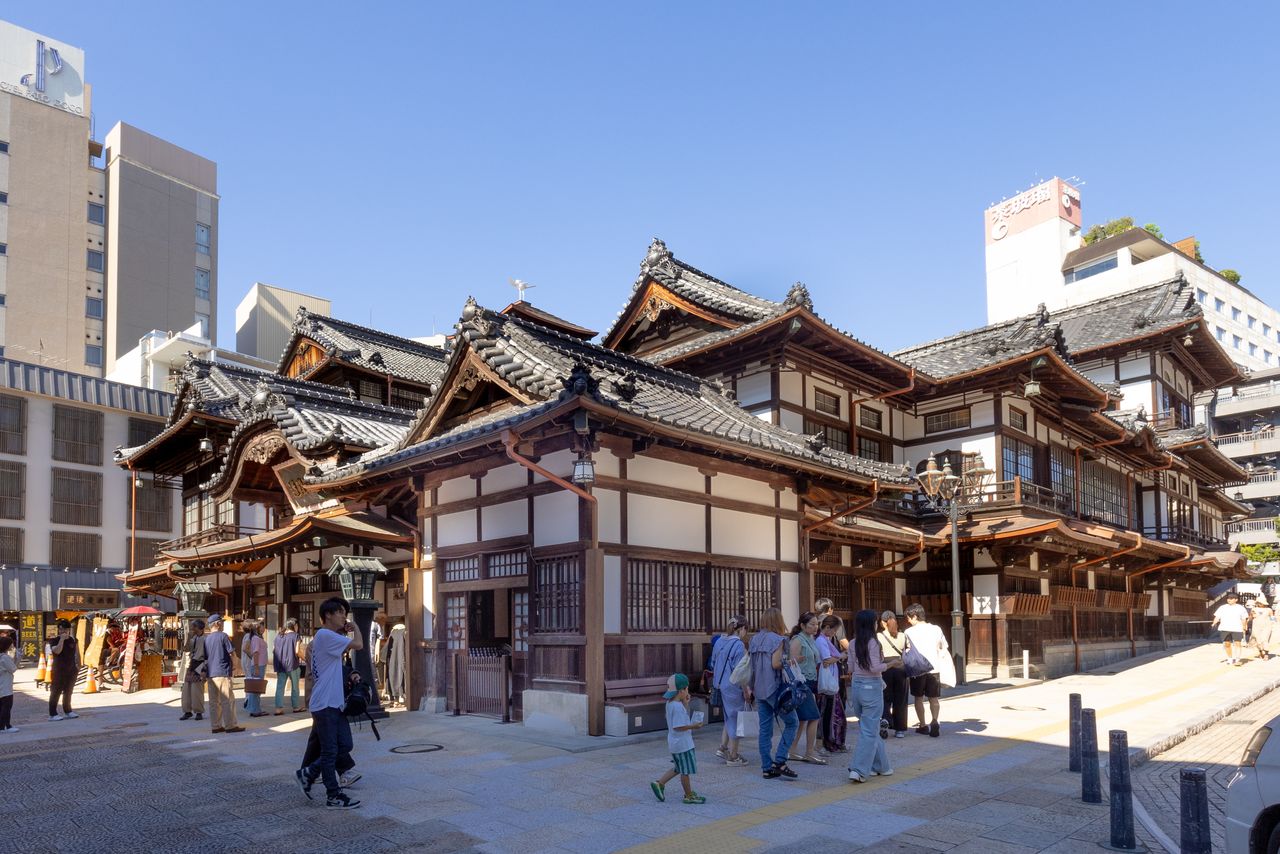
The Honkan’s distinctive architecture. The bathhouse in the film Spirited Away is said to have been modeled on the building. (© Nippon.com)
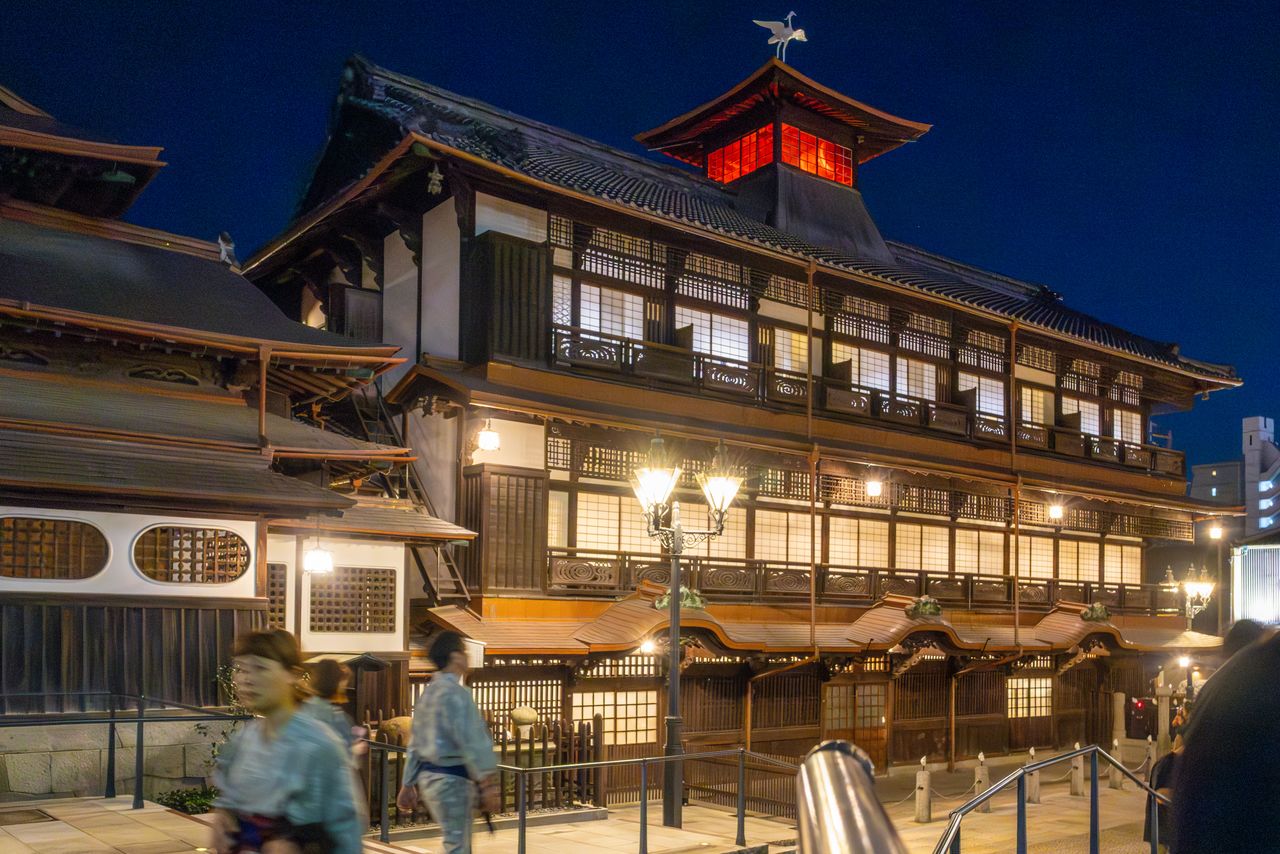
The Shinrokaku cupola glowing red. The Tokidaiko drum suspended inside sounds three times a day, at six, 12:00 noon, and 6 pm. (© Nippon.com)
Imperial Bath on Display
The Honkan houses the Kami no Yu and the Tama no Yu baths. Both are on the first floor, but the Tama no Yu is entered from separate second-floor stairs for men and women. This can be somewhat confusing for first-timers, as are the labyrinth-like corridors connecting the four buildings. Reflecting the structures’ age, ceilings are low and stairs are steep, but such features contribute to the old-time ambience.
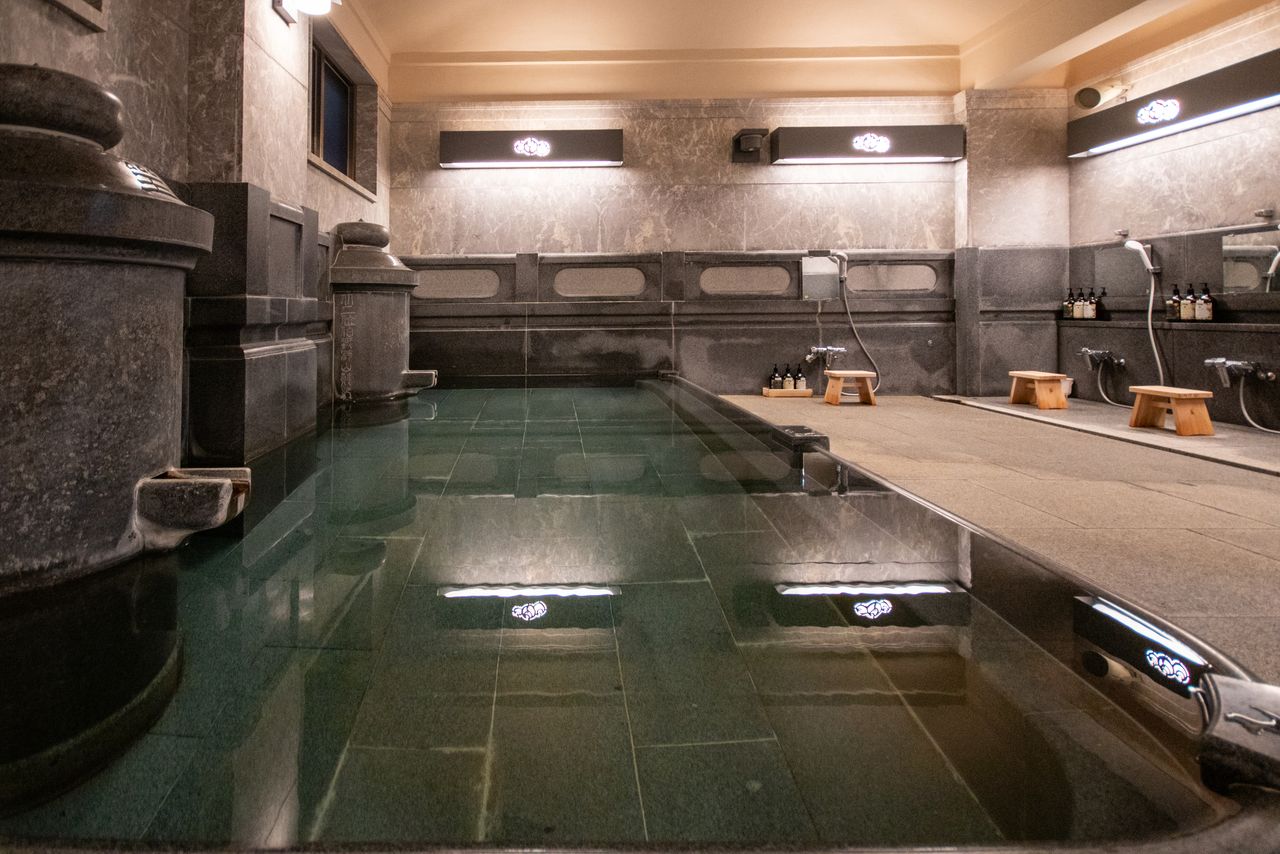
The Tama no Yu bath. The alkaline hot spring water is gentle on the skin; the water comes direct from the source with no reheating or added water. (© Nippon.com)
To fully appreciate the historic atmosphere of the cultural treasure that is Dōgo Onsen, visitors should head for either the large relaxation room or the smaller private relaxation spaces on the second floor. These are open to bathers who have bought a combination bath and relaxation room ticket. After bathing, don the rented cotton yukata robe and enjoy refreshing green tea.
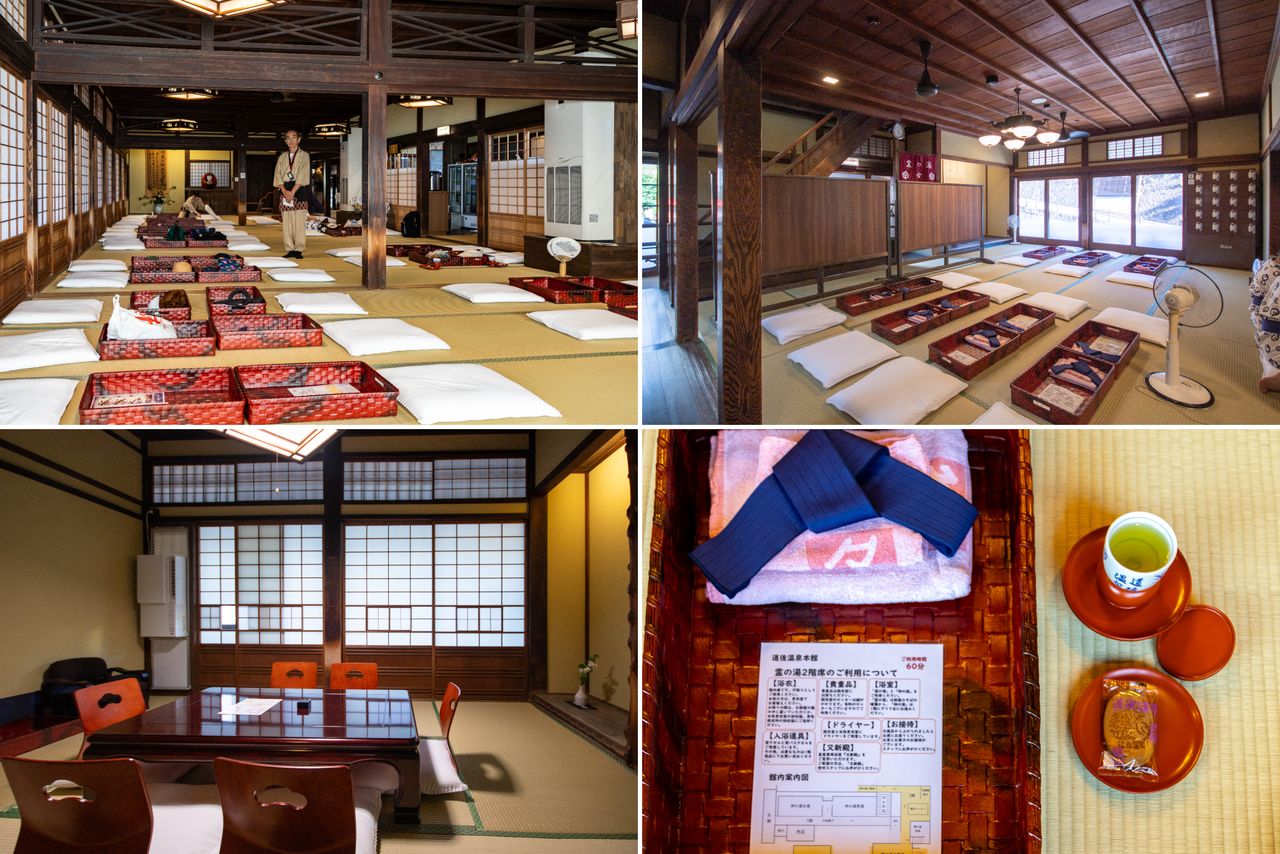
Top left: The second-floor Kami no Yu relaxation room has a capacity of 70 people. Top right: The second-floor Tama no Yu relaxation room holds 20 occupants. Bottom left: On the third floor of Tama no Yu, there are eight relaxation rooms. Bottom right: Use of the relaxation rooms includes a rented yukata and green tea, and depending on the room, a hand towel. (© Nippon.com)
On the third floor, two rooms previously used for other purposes were converted into private relaxation rooms. These rooms are not adjacent to a corridor or other rooms; they are reached by a dedicated staircase, ensuring full privacy.
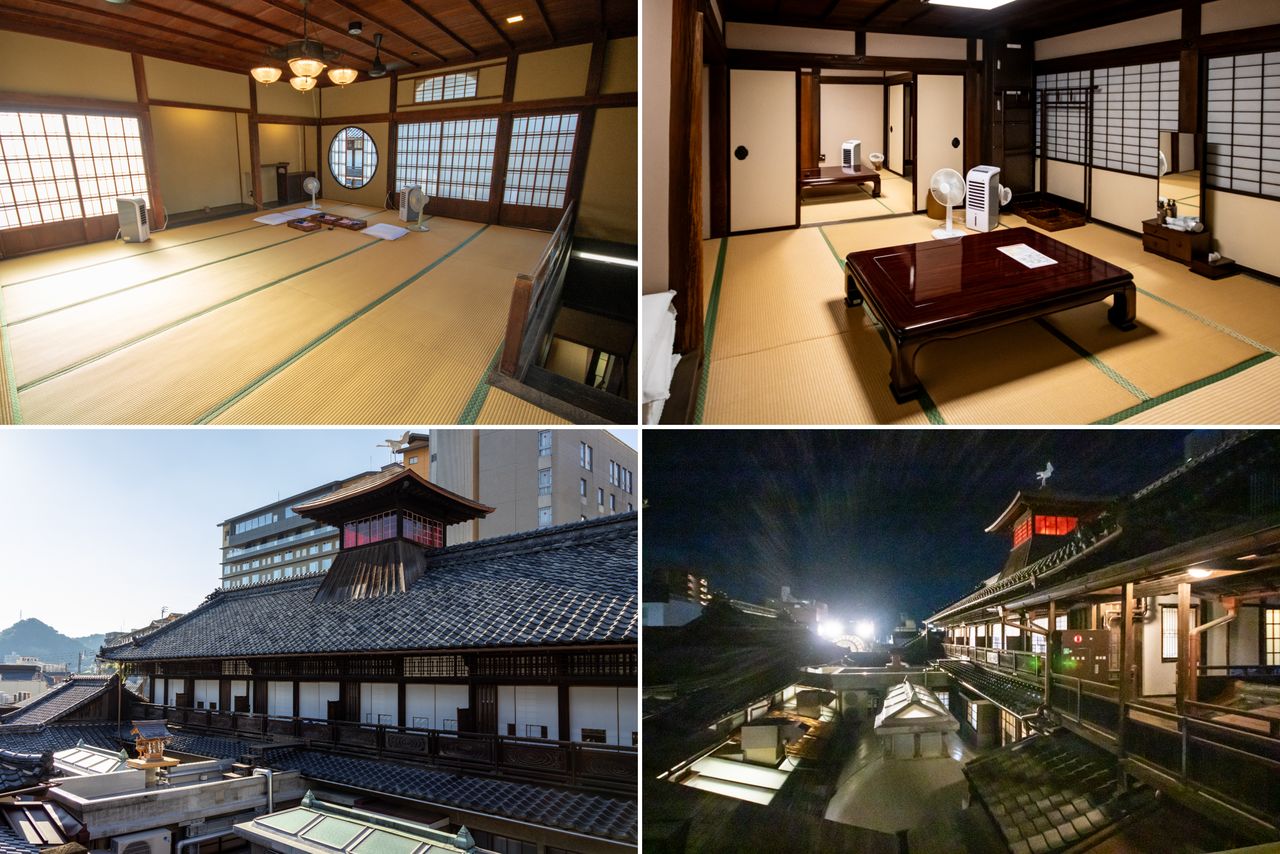
The Shirasagi Room (top left), for 18 occupants, and the Hishō Room (top right), for 10 occupants, offer close-up views of the egret, symbol of Dōgo, atop the cupola. (© Nippon.com)
For an additional fee, visitors can view the Yūshinden, the bath reserved for imperial family members, completed in 1899. Awe-inspiring touches of luxury include the fine Aji white granite yugama, the receptacle set up at the outlet of a hot spring, and the gold sliding door panels of the relaxation room.
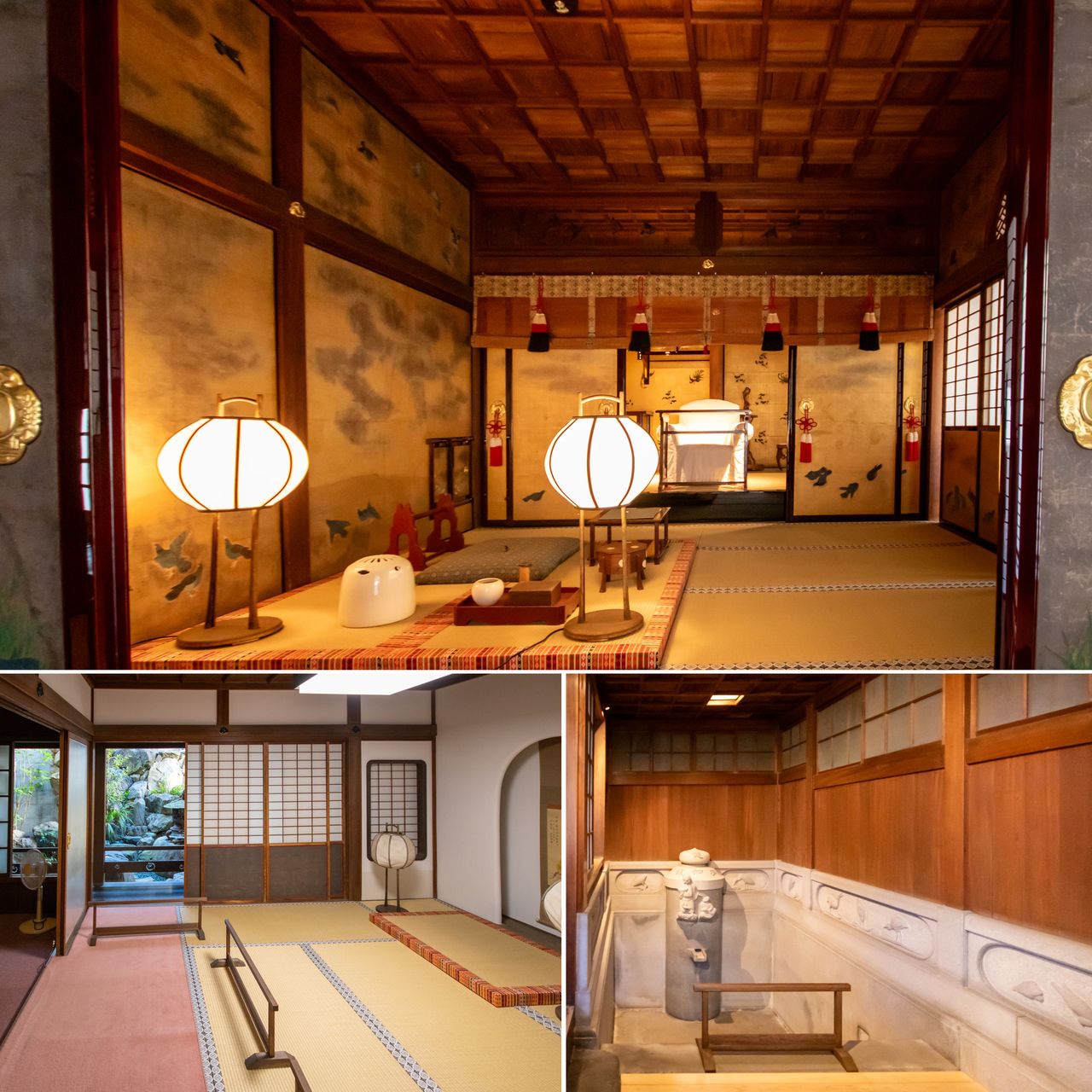
Top: the Yūshinden relaxation room. Left: the changing room has a view of an inner garden. Right: the Oyudono bath. (© Nippon.com)
Dōgo Onsen had previously charged a fee in line with that of ordinary public baths, but increased the price by 50% to cover higher costs due to inflation and defray preservation expenses upon reopening. However, better service, in the form of central heating and cooling and complimentary shampoo and body soap, now comes with the higher price.
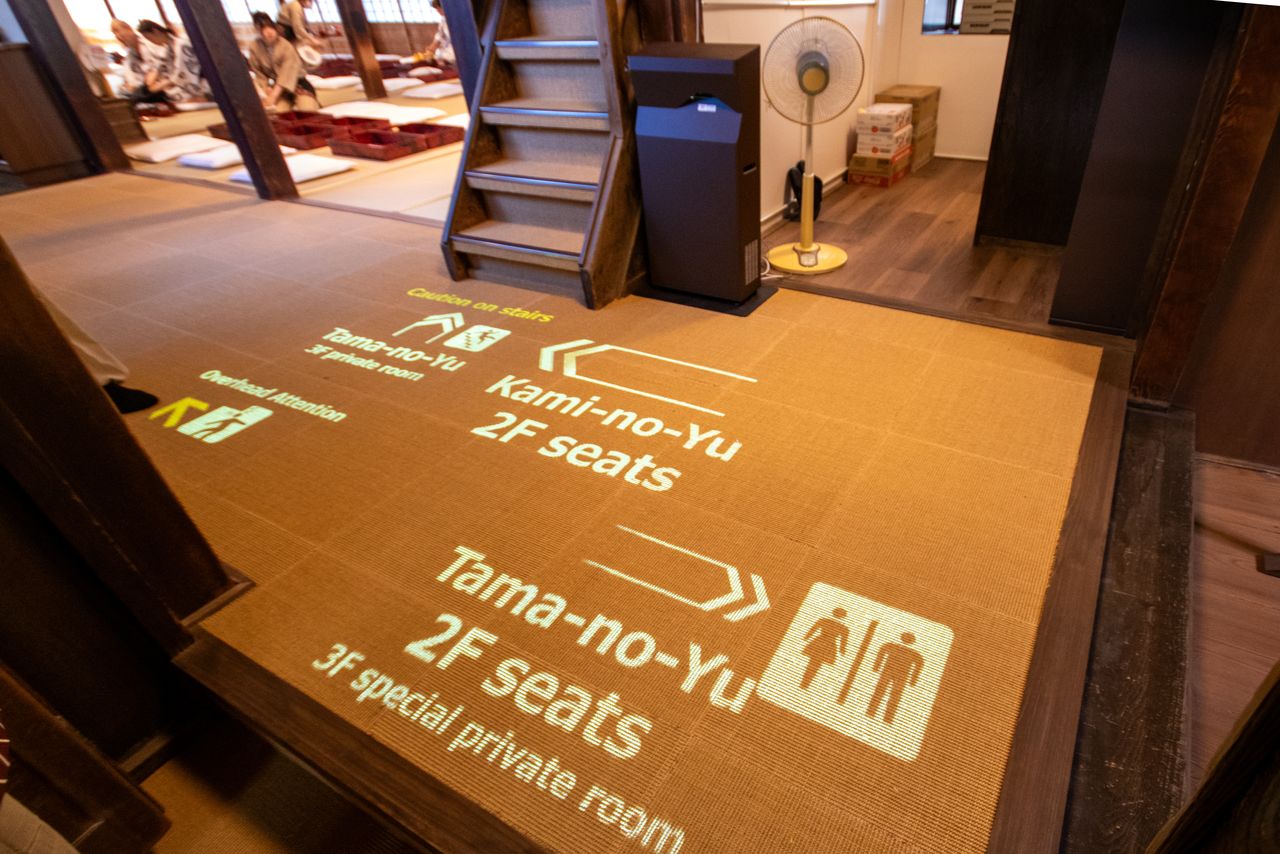
The building being a cultural asset, no signs can be posted on the walls. Instead, directions are shown projected on the floor. (© Nippon.com)
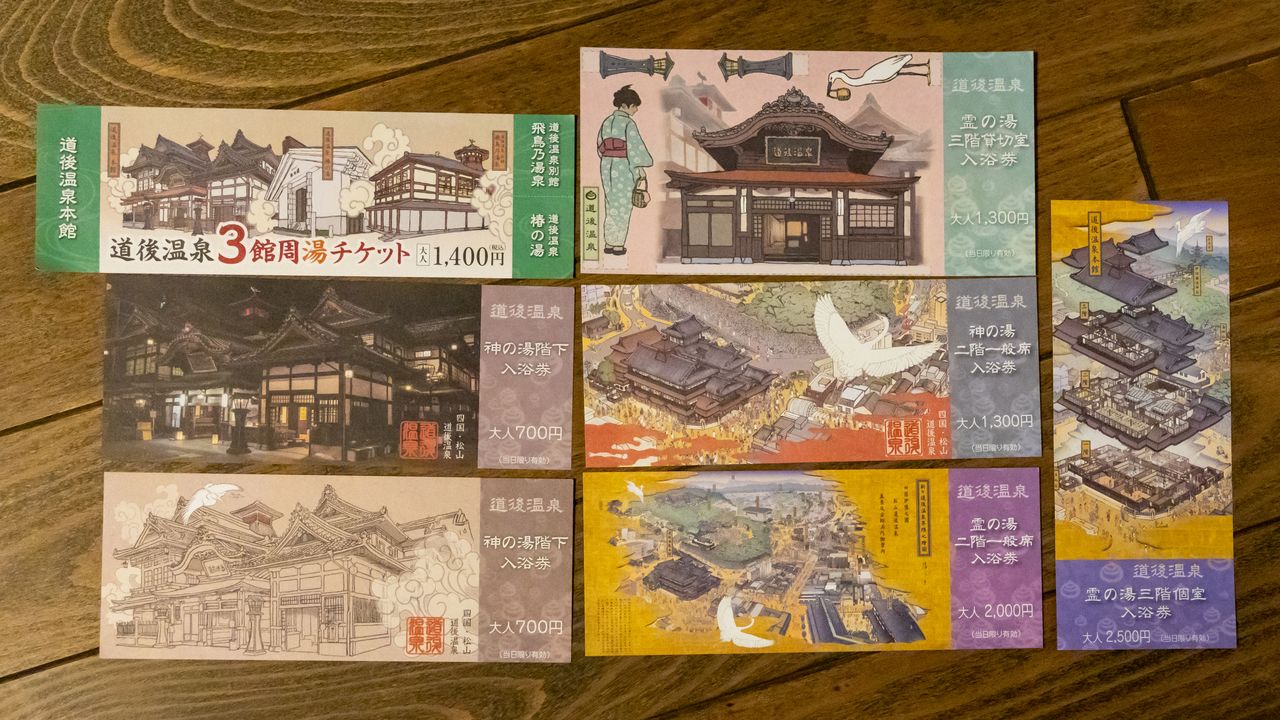
Redesigned tickets. The stubs make a handsome souvenir. (© Nippon.com)
Welcoming Foreign Visitors
Over the course of a year, 770,000 people stay overnight at Dōgo Onsen; of these, 55,000 are visitors from abroad. The Honkan is a popular spot for photos, but while many foreign visitors snap away outside the building, few of them venture inside.
Such visitors, if not accustomed to going naked in front of total strangers, may understandably be reluctant to bare it all. When they learn that the facility only has one large communal bath, most turn heel and leave. Many of them likely opt for nearby accommodations with private hot spring baths.
On the other hand, some foreign visitors welcome the opportunity to deeply savor a facet of Japanese culture. Dōgo Onsen hopes that many more of them will enjoy the special cultural experience of soaking in pure, undiluted hot spring water in a culturally rich setting.
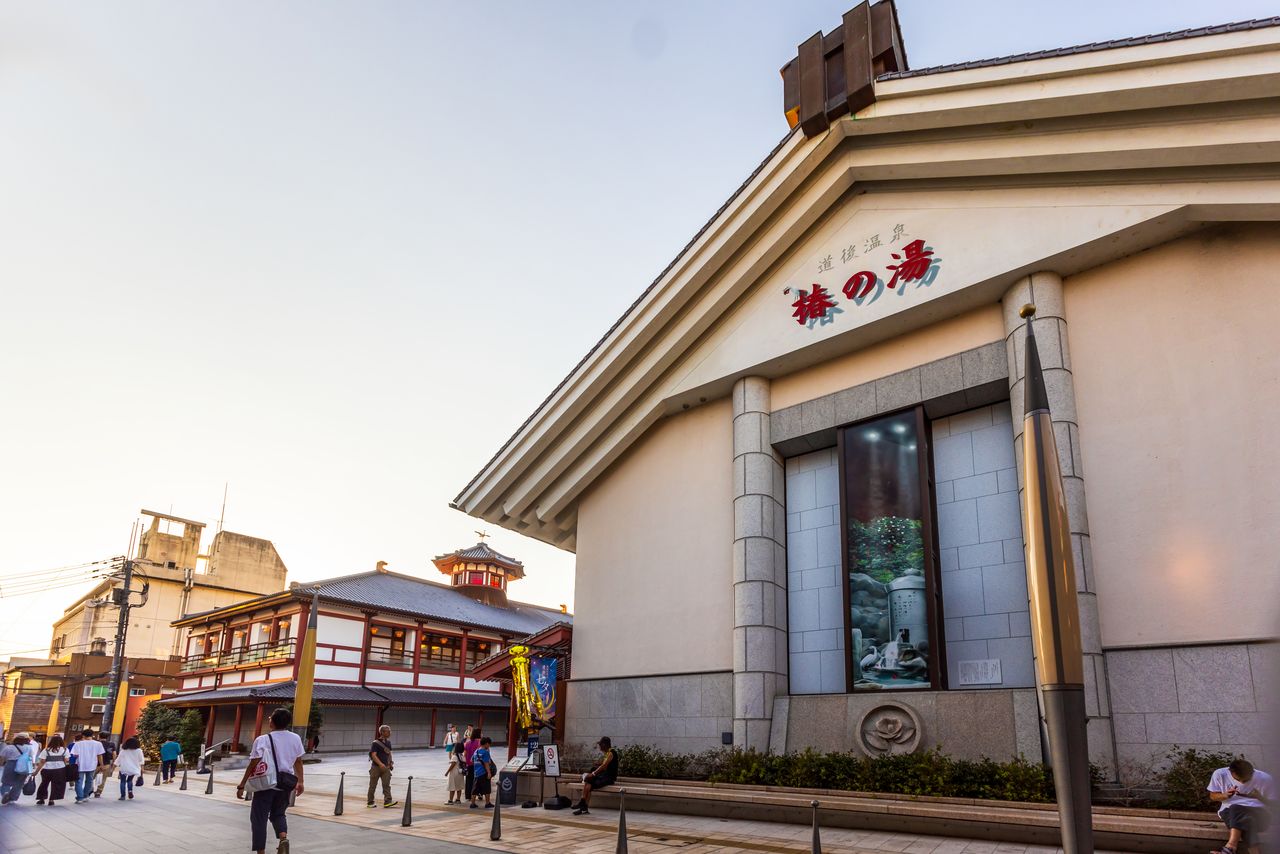
Tsubaki no Yu (foreground) and Asuka no Yu, nearby annexes to the Honkan, are also city-operated public baths. (© Nippon.com)
The Dōgo Onsen Asuka no Yu annex, opened in 2017, is equipped with modern conveniences; its relaxation rooms offer the same services as the Honkan. In the special bath, a replica of the Yūshinden imperial bath, visitors can bathe wearing a yukatabira, a garment believed to be the origin of today’s yukata, and enjoy bathing like nobles of centuries past.
The Tsubaki no Yu annex, neighboring the Asuka no Yu, has been a favorite relaxation spot for Matsuyama residents since its opening in 1953. The building, refurbished in 2017, is now much airier and more appealing and is a must-visit destination for onsen lovers.
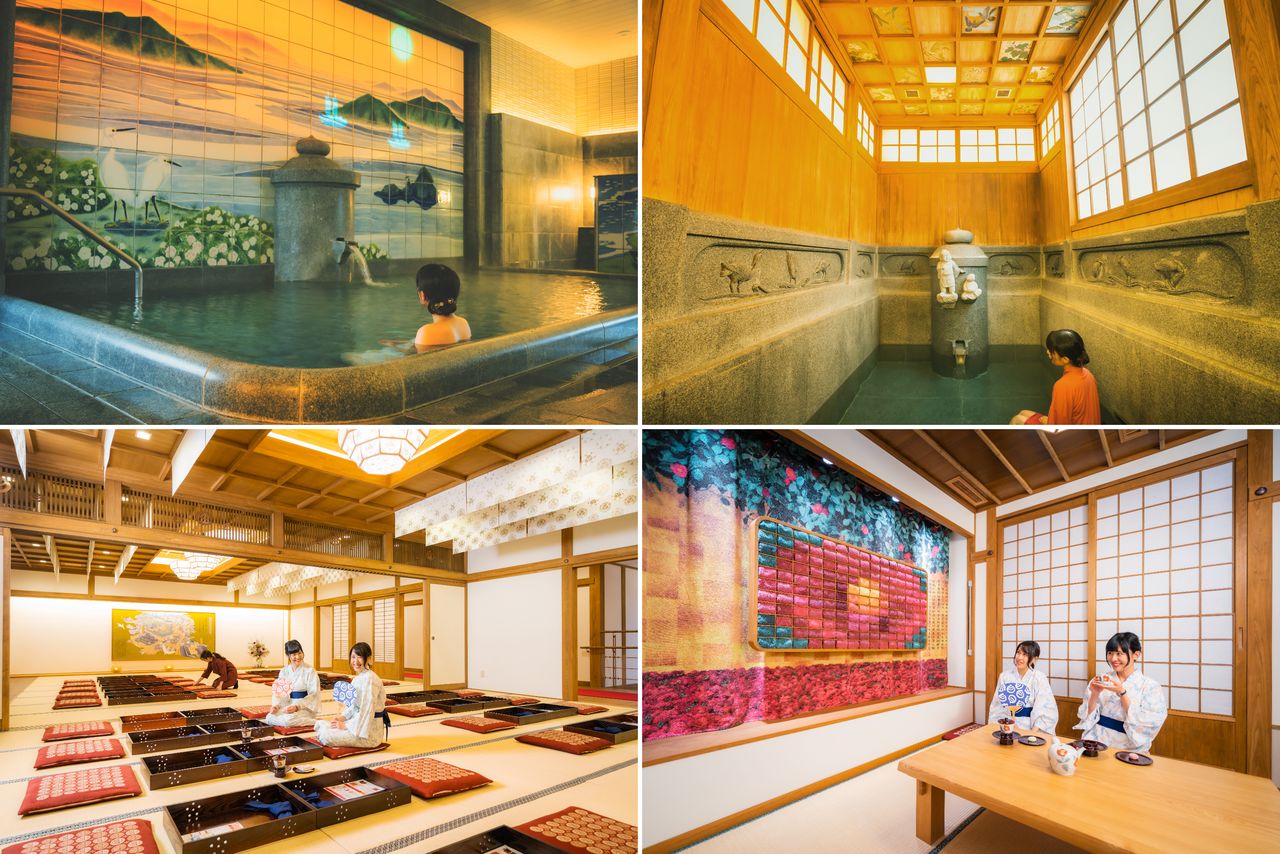
Top left: the large communal bath. Top right: this bath can be reserved for private use. Bottom left: the large relaxation room. Bottom right: a private relaxation room with a wall decorated with traditional craft art. (Courtesy Dōgo Onsen Consortium)
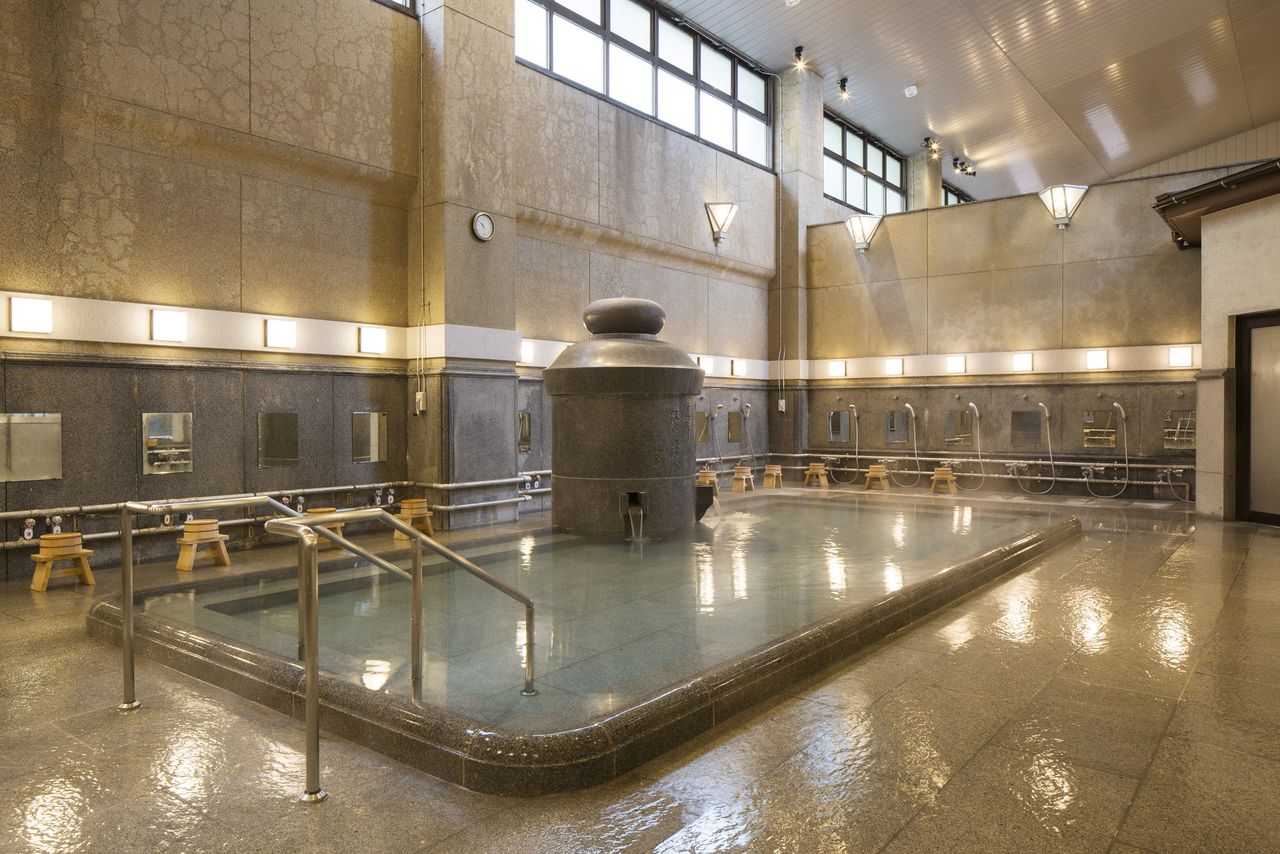
The Tsubaki no Yu annex has just a plain, unadorned bath. (Courtesy Dōgo Onsen Consortium)
Matsuyama is a treasure trove of spots related to onsen culture. On a hill next to the Honkan stands Yu Jinja Shrine, protector of the onsen district. In nearby Dōgo Park, a collection of yugama boilers dating from the eighth through to the nineteenth centuries has been assembled. They were moved from the Honkan and are venerated as the Yugama Yakushi shrine. Strolling around the area is a wonderful way to absorb Dōgo’s historic atmosphere.
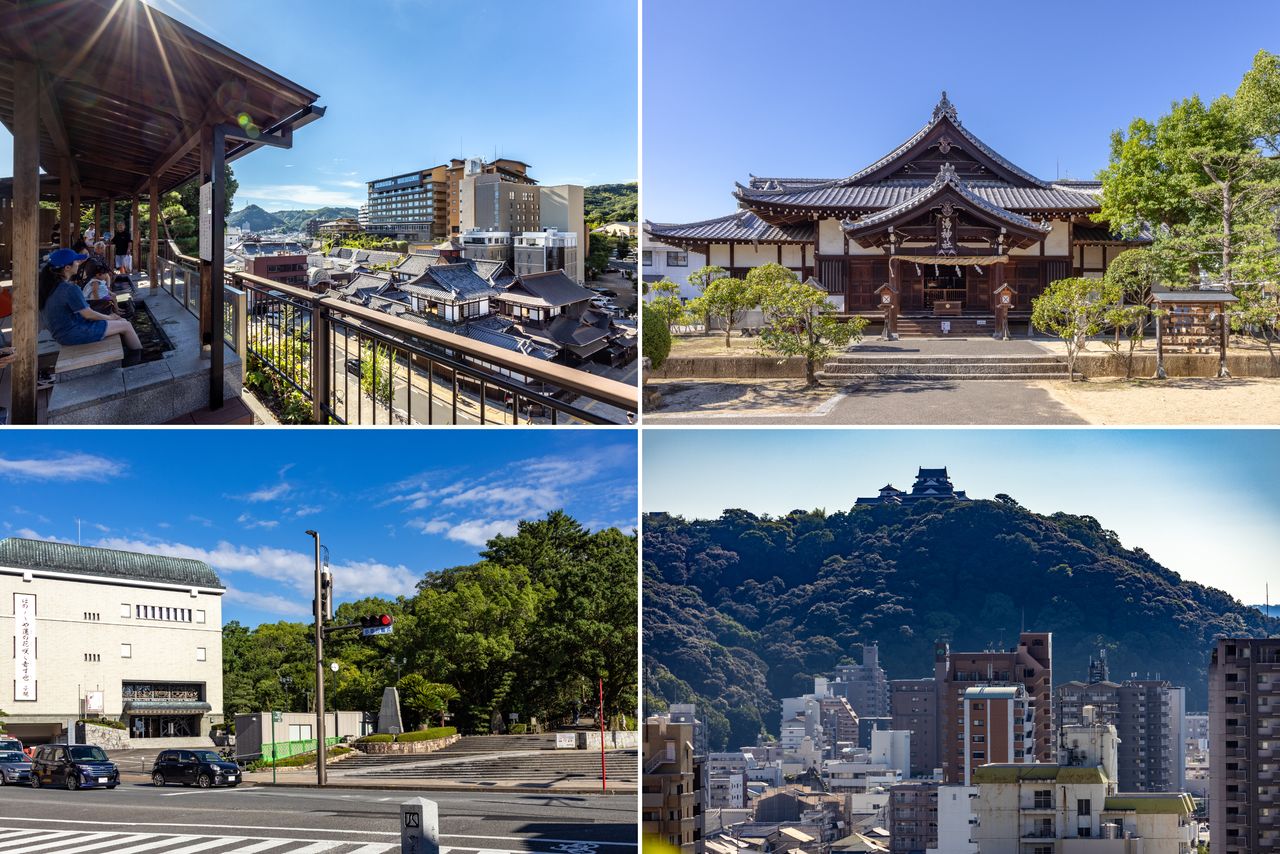
Top left: An elevated vantage point with a footbath gives a fine view of the Honkan. Top right: Yu Shrine, venerating deities Ōkuninushi and Sukunahikona. Bottom left: Dōgo Park, on the site of a former medieval castle. The Shiki Museum, honoring poet Masaoka Shiki, is at the park’s north entrance. Bottom right: Matsuyama Castle and the city are visible from the park’s observation deck. (© Nippon.com)
Visit the official Dōgo Onsen website for Dōgo Onsen Honkan, Asuka no Yu, and Tsubaki no Yu fees and usage instructions.
(Originally published in Japanese. Reporting, text, and photos by Nippon.com. Banner photo: Magnificent outlook of Dōgo Onsen Honkan. © Nippon.com.)
